A Ukrainian Ballet Corps Stranded in Paris
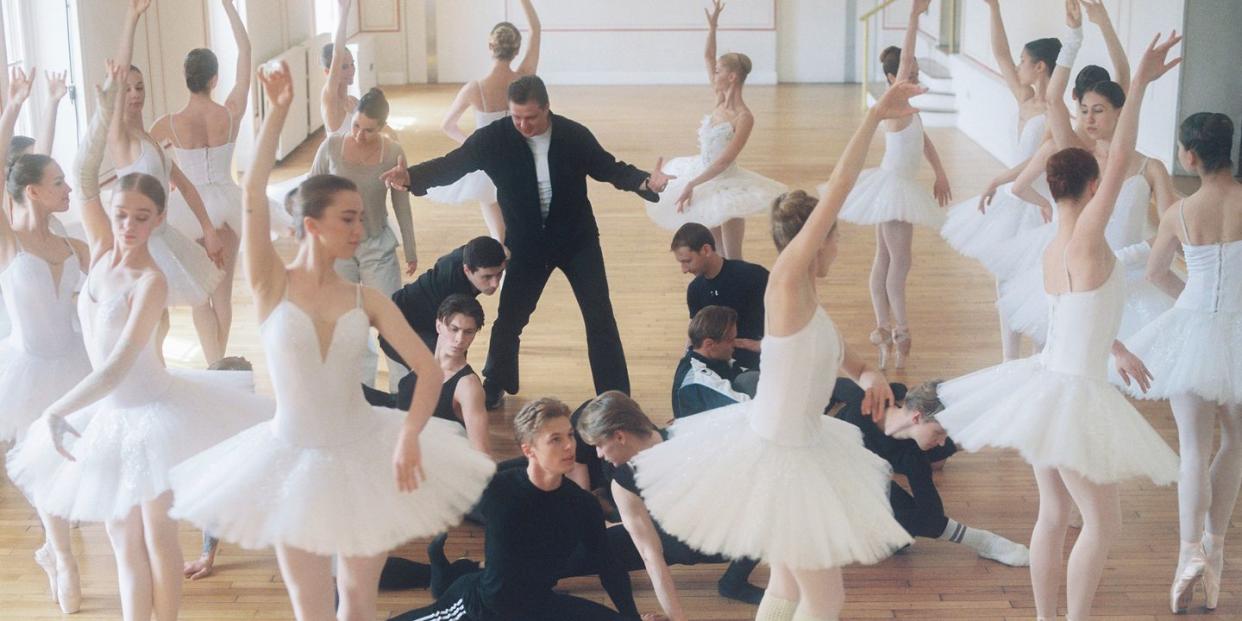
On an unseasonably sultry afternoon in May, I wind my way down the back stairs of the Théâtre du Châtelet in Paris’s First Arrondissement, a Haussmannian hall built in the Italian style in the mid-19th century and one of the city’s premier concert venues. It’s my second visit in two weeks, but it’s easy to get lost navigating the twists and turns of the theater’s narrow corridors, with only the growing crescendo of jingling tambourines emanating from below to serve as my guide.
Inside the lower rehearsal studio—named after Anna Pavlova, the famed prima ballerina who once danced here with the Ballets Russes—the Kyiv City Ballet company is mastering a new choreography. It’s called “Tarantella,” a nod to the upbeat Italian folk dance traditionally accompanied by tambourines. The dancers swirl and spin in a colorful array of leggings and leotards, with diaphanous circle skirts and pointe shoes. The company’s associate director, Ekaterina Kozlova, 30, sits on a stool at the front of the room, leading the session, while her husband, Ivan Kozlov, 39, the founder and general director of the Kyiv City Ballet, surveys the scene with a broad smile. “They’re all here,” he says, referring to the 38 members of his touring group, who are together for the first time since the Russian invasion of Ukraine began this year.
The majority of the Kyiv City Ballet arrived in Paris on February 23, ahead of a planned two-week French tour performing the canonical Russian ballet The Nutcracker.The following morning, the entire company awoke to the news that Russia had launched air strikes across Ukraine. A mass-scale evacuation followed. Many of the dancers’ families fled the country, with the exception of the men between the ages of 18 and 60, who were mandated to stay in Ukraine to assist the armed forces; a male soloist who has danced with the company, Oleksandr Dushakov, is there right now, lending his hand to the war effort.
It quickly became clear that the dancers would not be able to safely return home at the end of their tour, so Paris mayor Anne Hidalgo’s office set about finding a solution. The company was put up at a central city hotel, and on March 5 the Kyiv City Ballet was invited to take up temporary residence at the Théâtre du Châtelet.
In early March, as they worked to finalize the residency, 10 other dancers who had either left Ukraine or were abroad when the attacks began all made their way to the Czech Republic, where they were given space to train at the Moravian Theatre in Olomouc. They remained there for nearly two months, until Kozlov could arrange for them to be transported to Paris by bus, which happened shortly before my visit.
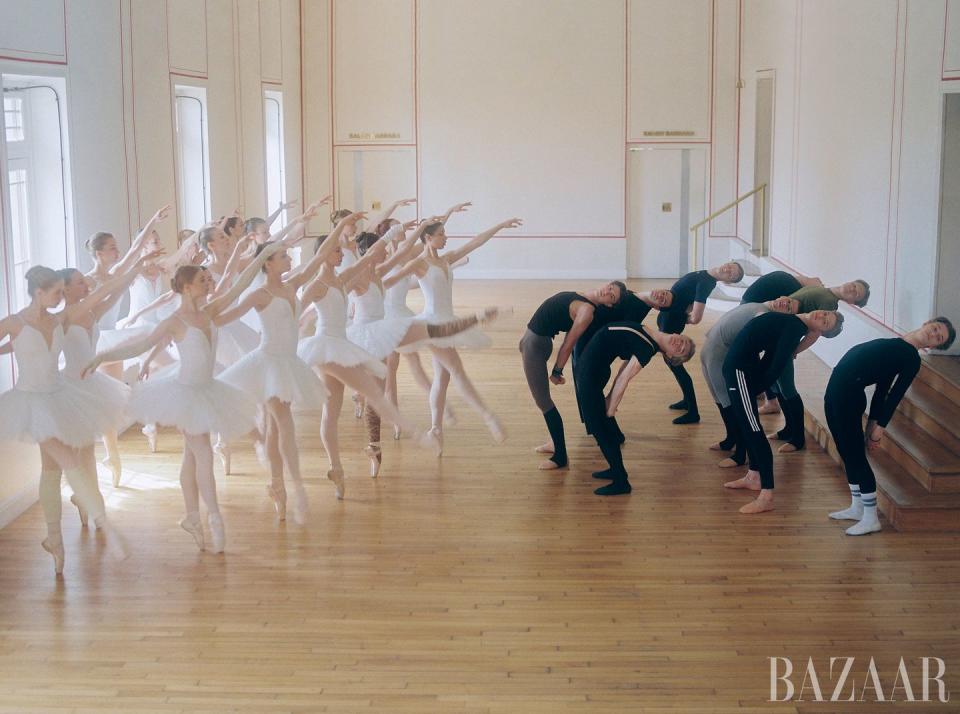
Paris has long been a refuge for artists—in particular, dancers. The Théâtre du Châtelet itself famously played host to the Ballets Russes, Russian impresario Serge Diaghilev’s avant-garde dance company, which made its debut in Paris in 1909. The city would emerge as a haven for Russian performers, artists, and émigrés who set off for western Europe amid the social and political upheaval in the run-up to the Russian Revolution of 1917. At the same time, it became a melting pot of nationalities and cultures, an alchemic influence that spurred one of the most fertile creative periods in French cultural history, “Les Années Folles”—the Jazz Age.
The Kyiv City Ballet’s residency at the Théâtre du Châtelet has meant having a regular space for practices, not performances—though shortly after it was announced, tour managers began to scout for bookings so the company could continue to work. They had just two principals, Olga Posternak and Mikhail Shcherbakov, among them and nothing but the Nutcracker costumes they brought for the tour—which, for the women, consisted of white tutus dusted with iridescent sequins. So Kozlov and Kozlova went about quickly developing a new show called Gala, a survey of their repertoire—prominent classical ballets, along with folk and modern dance—featuring a slice-of-life opening in which the dancers reenact a rehearsal session onstage.
Gala debuted on March 8 at the Théâtre du Châtelet as part of a fundraiser featuring dancers from both the Kyiv City Ballet and the Paris Opera Ballet. The portion of the show meant to mimic a rehearsal was led by the Paris Opera Ballet’s famed dance director, Aurélie Dupont, and Bruno Bouché, the artistic director of the Ballet of the National Opera of the Rhine. “It was a very moving evening,” says Thomas Lauriot dit Prévost, the general director of the Théâtre du Châtelet. “Then, it was very possible Ukraine would give up, but now the situation on the field is very different,” he explains. “Ukraine is resisting in the most incredible way.”
Indeed, for Kozlov, ensuring the company can continue to dance is itself an act of resistance. “The stage is the place of war for us,” he said when we first met in late April. “With every successful performance and every happy audience, we show we are strong as a nation, that there is no way to beat us.”
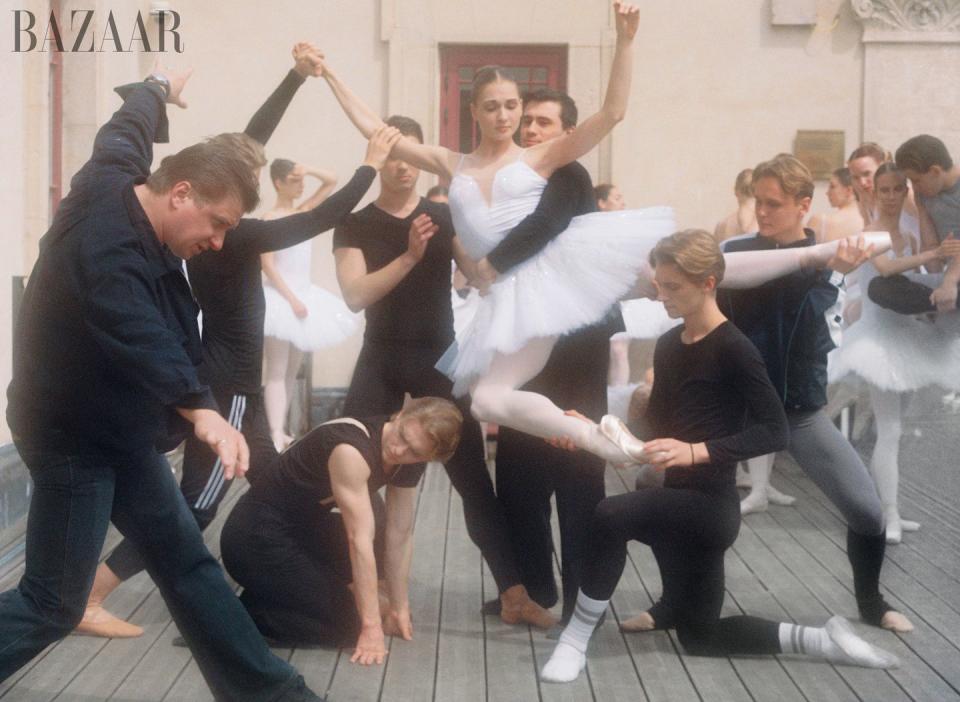
Since the Kyiv City Ballet was founded in 2012, the company has never had a home theater, so touring has always been its focus. As the war unfolded, there was never any hesitation from the members of the company about continuing to perform.
“We stay here because we can dance. We can represent our country,” says Elizaveta Nadenenko, 18, who left Kyiv for Slovakia in February before joining the company in Paris. Her 28-year-old brother is back in Ukraine, charged with delivering food and medical supplies.
“I have to hope that everything will be okay, and in the meantime I do what I know how to do,” offers another dancer, 21-year-old Polina Rabotina, whose twin sister and mother had gone to stay with her aunt in Innsbruck, Austria, but have since returned to Kyiv.
Like Nadenenko and Rabotina, most of the members of the company are young; roughly half are between the ages of 18 and 21. In the months since the war broke out, they’ve developed a strong familial bond; they’ve spent most of their waking hours together and their nights billeted in the same hotel. When they’re not performing, the dancers are at the theater rehearsing, six days a week. The daily routine has other benefits. “To dance, you have to be so focused mentally and physically, so it is very comforting for the dancers to be able to focus on something else,” says Kozlova.
“What we really give them—and I use this word with great caution—is a sense of normality,” Lauriot dit Prévost adds. “Just to say hello every morning when they arrive, to spend five minutes around the coffee machine and to ask how their day is.”
“No one expects war,” says Kozlova. “We just try to make sure that everyone, every day, is in an okay place, and if we see someone struggling, we make sure we spend extra time with them or that they have the resources they need.”
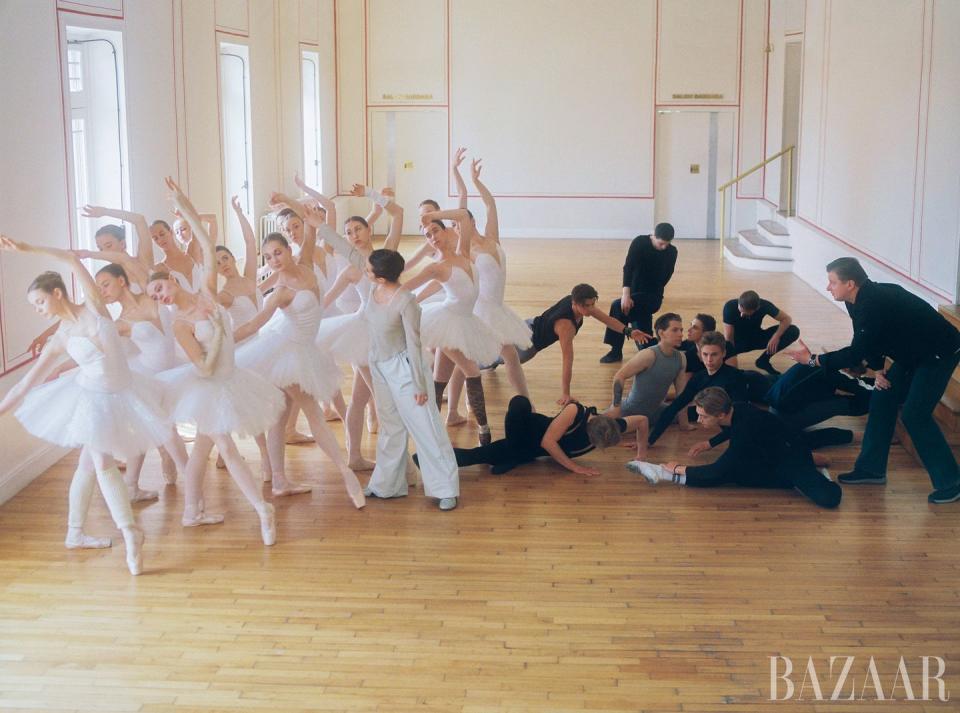
Kozlova, who was born and educated in the U.S. to Ukrainian-American parents, moved to Ukraine at 16 to study ballet. Kozlov’s parents are the Ukrainian ballet dancers Tatyana Borovky and Anatolii Kozlov, both longtime principals of the National Opera of Ukraine, which makes him ballet royalty back home. His mother and stepfather have just rejoined him and Kozlova in Paris. His father, however, remains boarded up in his home in downtown Kyiv with his own 84-year-old mother.
“We are working here. We are not hiding,” Kozlov says. “It’s more productive to make money for our country and keep our artists busy than to hide in bomb shelters,” he offers. “I might be wrong, but that is the way I feel.”
During their stay, the dancers have had access to the majestic Palais Garnier and the dancers from the Paris Opera Ballet, who rehearse and perform there—an opportunity so surreal that it has been difficult to take stock. “The Paris Opera is to ballet what the Vatican is to Catholics,” says Kozlova. “If these events were happening slower, probably everyone would be much more in awe.”
“I have mixed feelings being here,” admits Yaroslava Antonenko, 21, who joined the corps de ballet last year. “It’s great to be making so much progress, and I always dreamed of being in Paris, but obviously not in these circumstances.”
In reaction to the war, the sanctions on Russia have extended to a kind of cultural repudiation of Russian artists and art, applied to figures and works both past and present: Russia’s expulsion from the Eurovision Song Contest (and Ukraine’s subsequent win); the cancellation of the state-sponsored Bolshoi Ballet’s summer season at the U.K.’s Royal Opera House (the company is said to have close ties to Russian president Vladimir Putin); a debate over the proposed suspension of a course on Russian modernist writer Fyodor Dostoevsky at a university in Milan.
Nevertheless, the cultural histories of ballet in Russia and Ukraine are inextricably linked. Koslov, who has danced for both the National Opera of Ukraine and the Russian ballet companies the Eifman and the Mariinsky in St. Petersburg, sees merit in renouncing artists who have supported the Russian invasion but is wary of a blanket war on Russian culture. “If we cancel history, how does that help Ukraine?” he says, referring to the works of artists like Tchaikovsky, whose scores the Kyiv City Ballet frequently dances to when performing The Nutcracker and Swan Lake.
On the top floor of the Théâtre du Châtelet, there is a long reception room with parquet floors named after the dancer Vaslav Nijinsky, who was born in Kyiv to Polish parents but grew up in imperial Russia. The room features a row of double doors that open out onto a balcony with a view over the Place du Châtelet and the Fontaine du Palmier and its large, monumental column with the gilded goddess of victory perched atop.
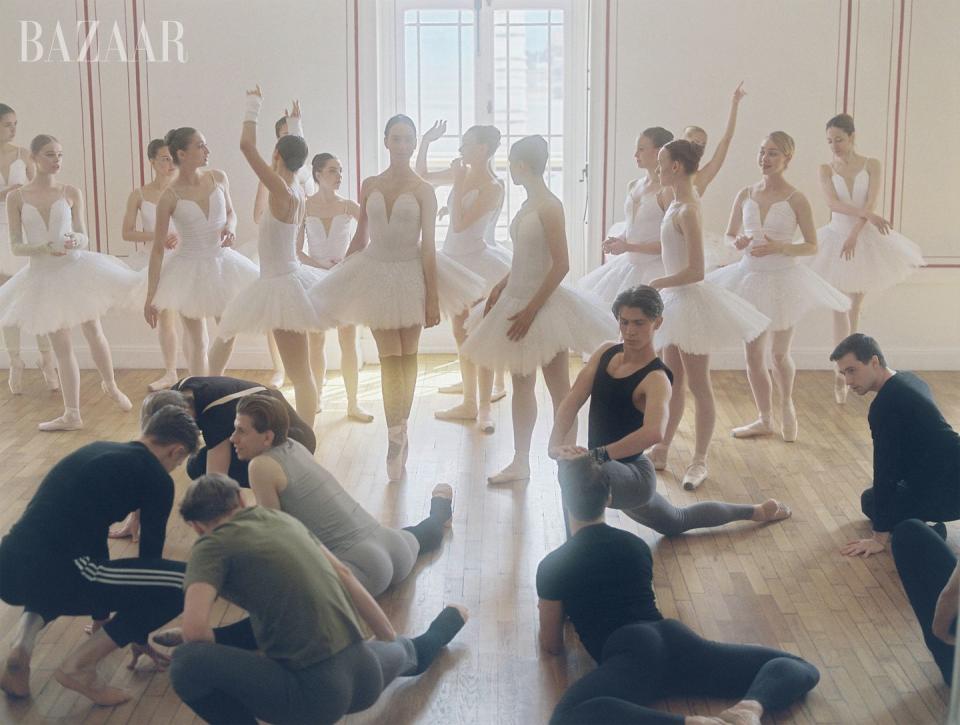
I watched the dancers, in their full Nutcracker gear, jostle and giggle here while taking in the vista. On the schedule for that afternoon were lessons with a group of French tango champions. Earlier that week, the company was given a juggling tutorial, as local artists of all stripes have continued to volunteer their time and offer support.
“People might think dancers must have good coordination, but we were terrible,” Kozlova says.
“Yes, and for a moment, everybody forgot about the war,” adds Kozlov. “We were all young kids again.”
Opening Image: Ivan Kozlov, founder and general director of the Kyiv City Ballet (pictured above, standing in the center), with his wife and the company’s associate director,Ekaterina Kozlova (to Kozlov’s right, in gray), overseeing a rehearsal at Paris’s Théâtre du Châtelet, where they’ve been given an open-ended residency
This article originally appeared in the August 2022 issue of Harper's BAZAAR, available on newsstands July 26.
GET THE LATEST ISSUE OF BAZAAR
You Might Also Like

